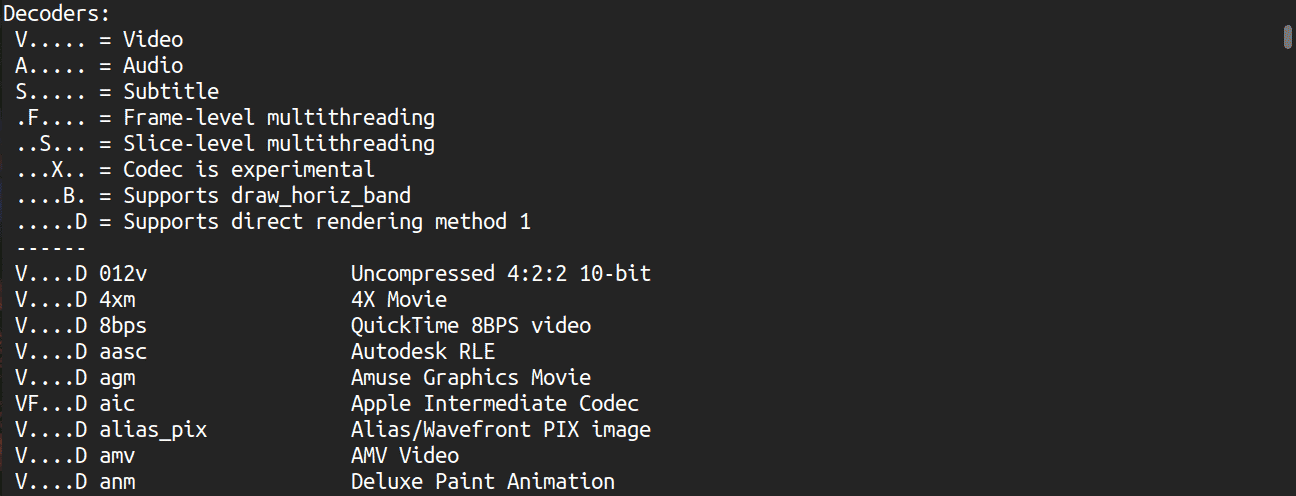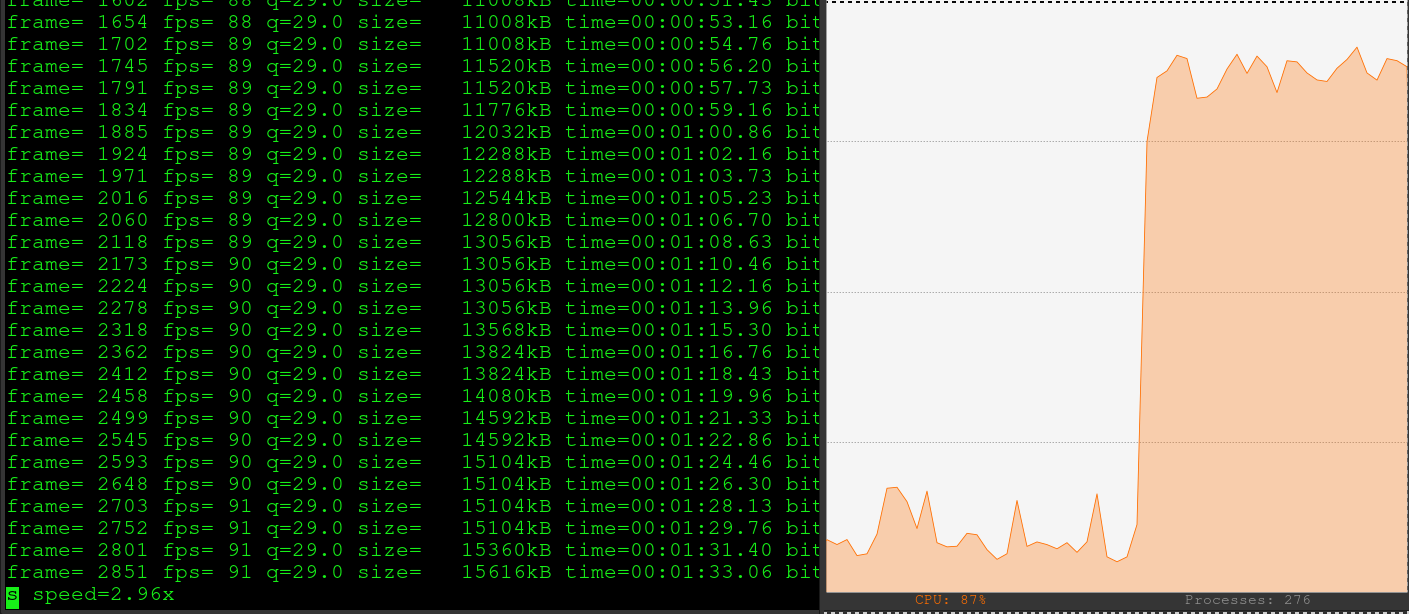
- #Ffmpeg linux usage how to#
- #Ffmpeg linux usage mp4#
- #Ffmpeg linux usage install#
- #Ffmpeg linux usage software#
The options are any options that you want in your FFMPEG command. You have five variables in total a source extension, a destination or resulting extension, a source directory, a destination directory, and your options. Sure, you can use the raw inputs, but it’ll be much harder to keep track.

Because of that, you’re going to need quite a few variables. You’re going to need to pass multiple arguments to your script if you want it to be flexible enough to handle most scenarios that you’d use FFMPEG for. Open the file up, and set it up to start writing. The script will be less than 20 lines of Bash. While that might sound like a lot, it really isn’t.

So, you can write a simple Bash script to loop through the contents of a specified directory and perform the conversion that you want on each file. You’re not going to sit there and manually type in the same command over and over, are you?įFMPEG is entirely scriptable. So, what can you do about it? You’re a Linux user. FFMPEG doesn’t have the ability to handle multiple files at once.
#Ffmpeg linux usage install#
RequirementsĪ working Linux install with FFMPEG installed. This will work on all Linux distributions. For more detail please visit the official FFmpeg Documentat.Write a simple Bash script for FFMPEG batch file conversion.
#Ffmpeg linux usage how to#
We have shown you how to install FFmpeg on CentOS 8 machines. # ffmpeg -i input.mp3 -c:a libopus output.ogg Conclusion: # ffmpeg -i input.mp4 -c:v libvpx -c:a libvorbis output.webmĬonvert an audio file from mp3 to ogg encoded with the libopus codec.
#Ffmpeg linux usage mp4#
The codec can be the name of any supported decoder/encoder or a special value copy that simply copies the input stream.Ĭonvert a video file from mp4 to webm using the libvpx video codec and libvorbis audio codec: You can specify the codecs you want to use with the -c option. The input file format is auto-detected, and the output format is guessed from the file extension. When converting audio and video files using ffmpeg, you do not have to specify the input and output formats. # ffmpeg -version Step 6: FFMPEG Audio and Video file conversion: Try one of the two commands, and you should see similar output on successful install. If everything worked as expected, you should be able to see the installed version. Now install the ffmpeg package using the yum command: You can install it using YUM, issue the following command: Step 3: Install SDL2 Library DependenciesįFMpeg will require the use of the SDL2 library. Press y to proceed with the installation.

Using YUM, you can install RPM Fusion repository:
#Ffmpeg linux usage software#
They are both free to use, but the non-free repository contains software that may not be covered under open source licensing.

RPM Fusion has two repositories we will be using, a free one and a nonfree one. # yum install Step 2: Install RPM Fusion repository The EPEL repository can be installed using YUM or DNF, whichever you’re more comfortable with. You need to enable EPEL on CentOS before you enable RPM Fusion. First you have to install the EPEL repository, which contains a bunch of extra packages not shipped with the base CentOS 8 install media.Įxtra Packages for Enterprise Linux (or EPEL) is a Fedora Special Interest Group that creates, maintains, and manages a high quality set of additional packages for Enterprise Linux, including, but not limited to, Red Hat Enterprise Linux (RHEL), CentOS and Scientific Linux (SL), Oracle Linux (OL).


 0 kommentar(er)
0 kommentar(er)
